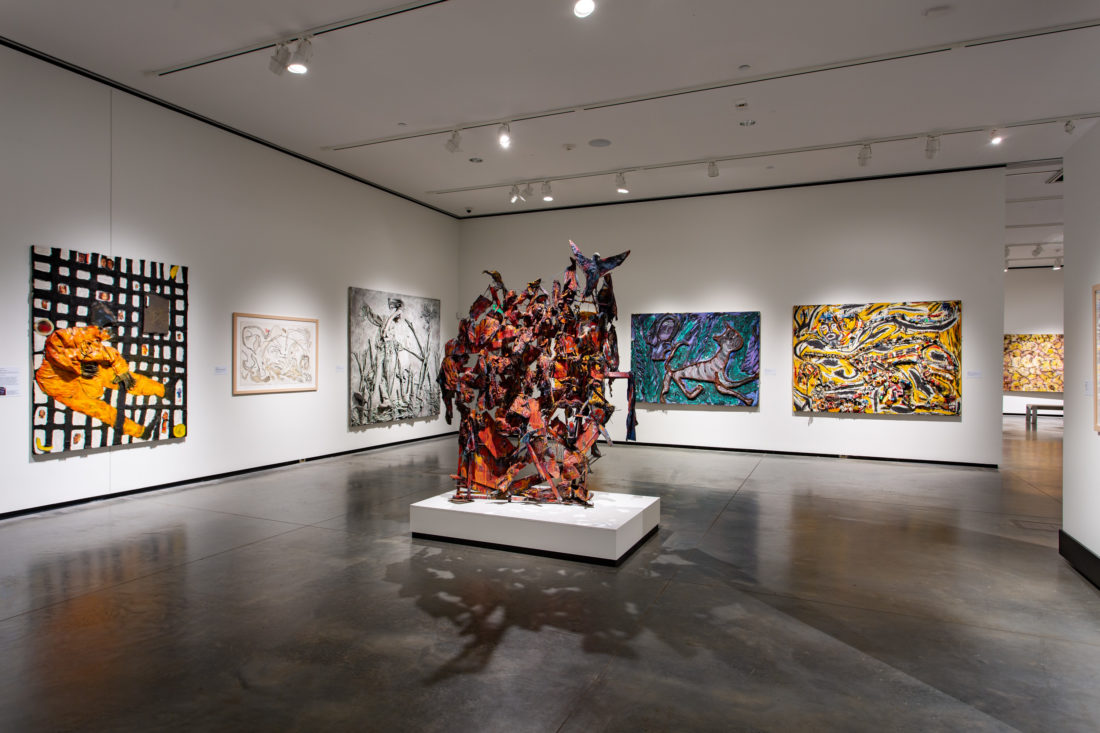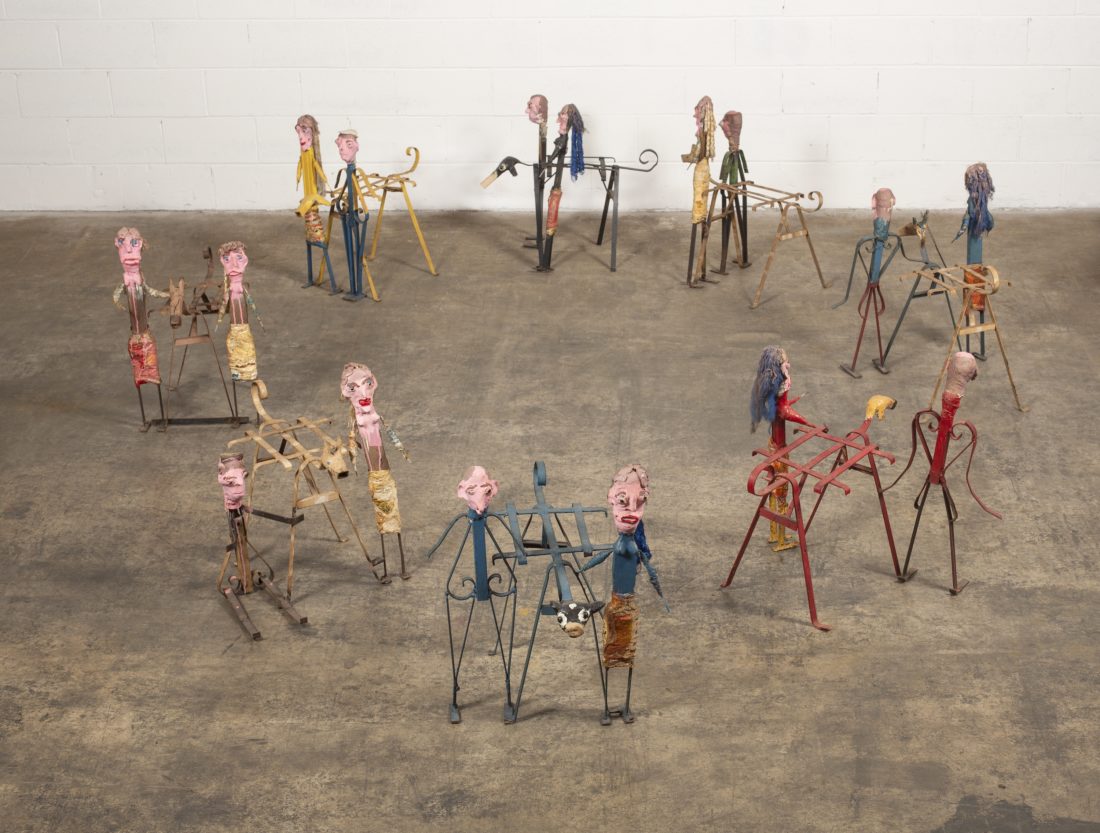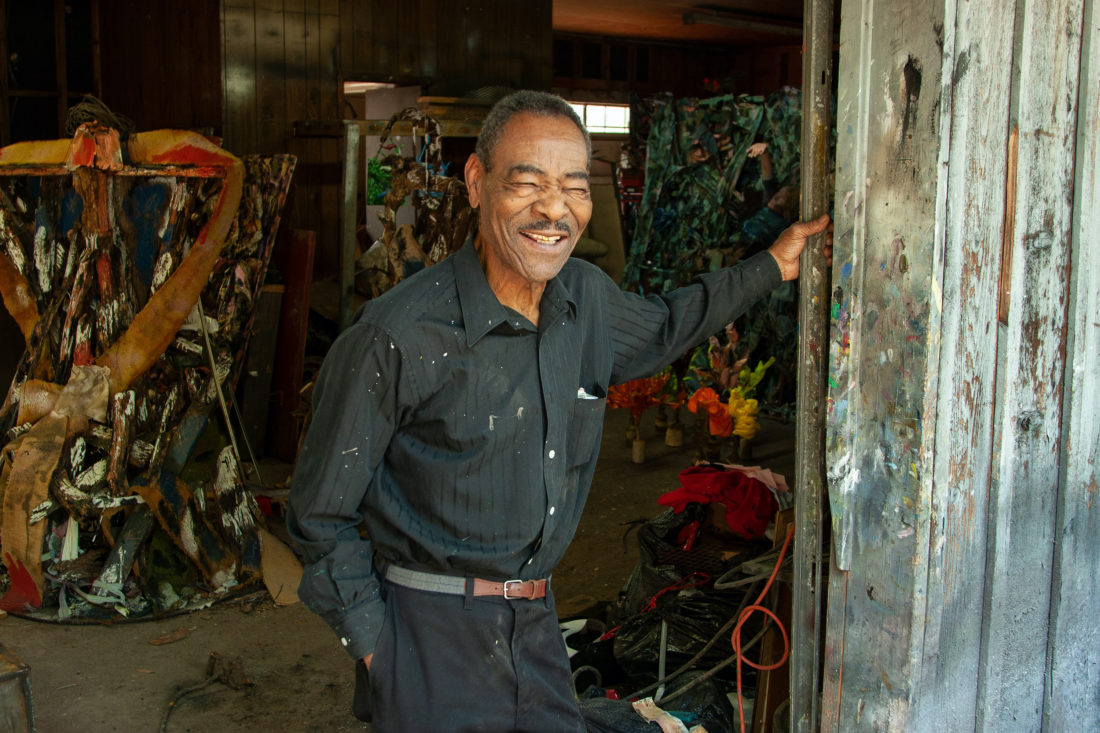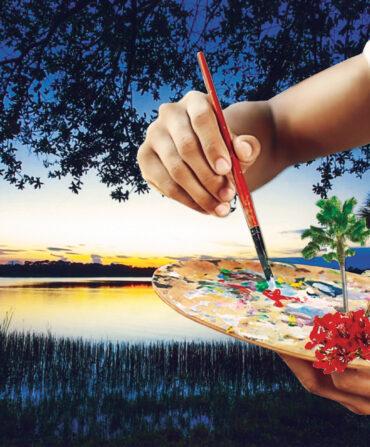For Thornton Dial, creative expression was a way of being: In interviews with the art collector William Arnett, the Alabama artist recounted, “My art is the evidence of my freedom.” For his entire life, Dial created artwork in response to his everyday joys and the struggles he faced as a Black man living in the rural South. Even after he suffered a stroke, he adapted his artistic style to his declining health.
During the last few years of his life, and after his death in 2016, his artwork traveled to prestigious museums in New York, Washington, D.C., and Houston. This fall, much of his artwork has returned to the place where he grew up and raised his own family. The latest show at the Abroms-Engel Institute for the Visual Arts (AEIVA) at the University of Alabama at Birmingham, I, Too, Am Alabama offers a homecoming for Dial, showcasing his drawings, paintings, and giant found object assemblages—including massive never-before-seen paintings that sat in his Bessemer studio after his death. I, Too, Am Alabama is free and open to the public and will run until December 10, 2022.

The solo exhibition is a comprehensive and thoughtful tribute to the artist and his homeplace. “No one in his neighborhood was able to see him in the context of Alabama,” says guest curator Paul Barrett. “We wanted to literally bring him home to people that knew him in real life and felt his presence.” Dial, who spent his entire life in his home state, was at first not an artist by career: As a young man, he left school to support his family on a sharecropping farm and former cotton plantation in the segregated rural town of Emelle, Alabama—which is now one of the country’s most toxic waste dumps. While Dial pursued furniture-making and metalworking, he always used his hands, whether drawing a response to President Barack Obama’s inauguration, crafting sculptural fishing lures, or fashioning a scene of a dog show with metal, wire, marbles, and bread bags.

The show’s text panels and passages from the catalog weave together a multi-voiced narrative with the voices of Dial’s friends, art scholars, museum lenders, and collectors as well as excerpts of interviews with his family. It also brings together artists touched by Dial’s influence, including Alabama Poet Laureate Ashley M. Jones, Los Angeles artist Umar Rashid, and one of Dial’s sons, Richard Dial. “The exhibition became a small novella of what Thornton Dial meant to everyone,” says John Fields, a director at AEIVA.

Accessibility was a priority to the curators. “It was important that the sites were free and open to the public with no barriers to entry,” Barret says. “We didn’t want to turn anyone away because they didn’t have money to pay the admission charge.” At the debut of the show, AEIVA offered free shuttles from the local library to I, Too, Am Alabama. “We recognize there’s an issue [in the art world]—for communities across the United States, traditionally, museums are not thought of as welcoming spaces for people of color. Most museums look like courthouses and government buildings. It can be intimidating.”
Some of the most meaningful curation moments came from working with Dial’s family. Dial’s son, Richard, leads the virtual 360-degree tour of Dial’s Bessamer studio, speaking about his dad with kindness and deep admiration. “The joy of working with him, and his spirit, seemed to kind of linger around here,” Richard shares on the virtual tour. “That studio was all him, and his image fills the room. It’s the closest memories you can get.”

Barrett recalls the joy of Dial’s family at the debut of the show. One of the artist’s granddaughters found familiar pieces in one of the sculptures, including a toy bear. “She and her mother went through and went through, pointing out different things they remembered. He used their materials in his sculpture. They saw their toys differently, saw it as art,” Barrett says.
For Fields, witnessing that intergenerational interaction spoke directly to the power of Dial’s work. “Inanimate objects that have exchanged hands over generations can retain memories and energies. In artwork made out of found objects, they can come charged,” Fields says. “The type of memories and histories that objects have affect the way the viewer reacts to it. You almost tear up.”
As for Dial’s family members, they shed their own happy tears. “They thought they would die without seeing something like this,” Barrett says. “Everyone has said that this show, hands down, means more to them than any other presentation of Dial’s work. Because it’s home.”








